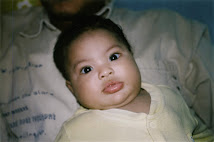Tips for Catching Liars
Parents often face the prospect of whether their child is lying to them. A husband or wife might believe their spouse is lying to them. But though you might suspect that a loved one is lying to you, it's often hard to know for sure.
Here are a few ways to tell if someone is lying to you. If someone displays any one of these traits, I wouldn't jump to conclusions and convince myself that person is lying. But if these warning signs begin to pile up, then you might be onto something.
Try to use logic to back up your impressions. If someone's story changes over time, then the person is more likely to be lying. It probably means that the person can't remember every detail of the lie.
Also, try to compare a suspected liar's behavior against that person's usual behavior. Deviations in behavior are often telling.
Body Language
1. Avoiding Eye Contact
2. Unnatural Hand Movement
Their hands touch their mouth, throat or other parts of the face. They scratch behind their ear, the top of their head of the end of their nose.
3. Personal Space Is Restricted
Hand and arms movements are towards their body in general. If the person is taking up less space, that is a sign they are being defensive and trying not to be noticed.
4. Stone Faced
Facial expressions can be described as stone-faced. This is the classic attempt to use a "poker face" to avoid being read.
5. Not Facing the Truth
The person turns away from you. If the person seem uncomfortable facing you while being questioned, by turning their face or their entire body away from you, then the person is probably hiding something.
6. Conflicting Body Language
If body language and expressions seem to contradict one another, this might mean that a person is lying. If a person expresses a positive emotion but has a negative look on their face, that person may not be telling the truth.
7. An Unnatural Smile
If a person smiles only with their mouth, this is a fake smile. When people smile a genuine smile, that person's eyes tend to squint, their cheeks raise and their forehead scrunches down.
8. Gestures Out of Sync
If a person's reaction time is delayed, this means they are thinking before they act. So if a person's smile or anger is delayed, this tends to be an unnatural reaction. The person is distracted at the very least, and possibly hiding something.
9. Builds a Wall Between You
If a person places objects between the two of you, this is a sign they are building a kind of barrier between an accuser and himself or herself. This barrier might be a cup, a tray of food, a laptop computers, a book or most any other object.
The Liar's Rhetoric
1. If a person mumbles when answering your questions, this means they are trying to muddle their way through the conversation and avoid speaking the truth.
2. If a person evades the question or doesn't give a direct answer, this might mean that person is trying to avoid a direct lie.
3. If a person answers your question by repeating your words, the person may be buying time to think of a lie or evasion.
4. A person who over enunciates their words is more likely to be lying. A person who uses contractions in their speech is more likely to be telling the truth. This is a more natural, relaxed way of speaking. The liar might be trying to overcompensate.
5. A person who uses sarcasm to avoid your questions, this is a defense mechanism. Humor is also a common way to avoid answering with the truth. Of course, humor and sarcasm have many uses besides hiding untruths.
6. If you change the subject, a liar is likely to be happy to change the subject with you and discuss anything but those situations involving their lies. A truthful person being accused of lying is much more likely to return to that subject, to defend their truthfulness.
No Hard and Fast Rules
These signs all point towards lying and deception. This does not mean people exhibiting these behaviors are not always lying. Every person is different. Some people are not comfortable in conversation at any time. Others might be avoiding certain subjects because they aren't in the mood to discuss it or because they are distracted by something else. Try to use these signs as a guide to follow up hunches or to support factual inaccuracies.
The Habitual Liar
These signs suppose a normally truthful person who is lying for specific reasons, such as a child wishing to avoid punishment for a "bad" behavior. In the case of the habitual liar, not all of these signs might work.
Unfortunately, some people become so comfortable with lying that lying becomes a natural act for them. They become practiced at it. Even then, a person is likely to betray some hint that they are lying. So I would suggest you rely more heavily on your logic and fact-finding skills when dealing with such a person, or simply avoid the person altogether.















































0 KOMEN:
Catat Ulasan
Kongsikan komen anda di sini...